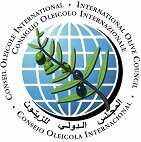The Executive Director of the International Olive Council, Mr Abdellatif Ghedira, was received on 6 October by His Excellency Mohammad Hassan Fadaifard, Ambassador of the Islamic Republic of Iran since 2014.
During his visit, Mr Ghedira, highlighted the importance of this country, an IOC member since 2004, within the Organisation. Although there is still doubt as to when the olive tree first appeared in Iran, references are made to this tree in certain Iranian religious hymns dating back two thousand years. A cradle of ancient civilisations and the probable birthplace of the olive tree, Iran has some 90 000 hectares of cultivated olive trees spread between over 35 000 estates, of which 91% are under irrigation. Of the olives produced, 70% are used for table olive processing and 30% for the extraction of olive oil. Olive growing is an important source of employment in the country: in 2014/15, it generated almost 9 million days of work.
The production of olive oil in Iran has increased by 160% over the period 2003/04-2015/16, going from 2500 t at the beginning of the period to 6500 t in the last crop year. Average production of the last six crop years was of 5000 t, but consumption is twice as high (10 000 t on average over the last six years).
The production of table olives has increased more than that of olive oil over the period 2003/04-2015/16, going from 12 000 t at the beginning of the period to 76 500 t in 2015/16, with an increase of 64 500 t. Consumption has followed the growth in production, mainly at the local level.
Mr Ghedira also used his visit to the Ambassador to presented the new International Agreement on Olive Oil and Table Olives and informed him that member countries had been invited to deposit their instrument of ratification or to notify their provisional implementation of the new Agreement with the Depositary before 31 December 2016
.










